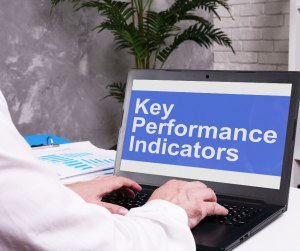
Key Performance Indicators
As continual improvement is the key theme running through all management system standards, whether they be for quality, environment, or health and safety, it’s essential that you can demonstrate progress over time. To be able to do this there has to be some measure of where you are in relation to where you want to be. ‘Key Performance Indicators’, or KPIs, provide that measure. Simply put, they are indicators of performance related to key areas of importance for your business.
Why are KPI’s important?
KPIs are a useful tool to help you understand and communicate performance, particularly in relation to the objectives of the management system. They can also be essential to demonstrate conformance with requirements (such as a client’s service level agreement) or compliance with legislation (for example, staying within prescribed limits). But it’s important that KPIs are actually useful, and it’s better to track a few good metrics than waste effort collecting data on many meaningless criteria.
In deciding what to focus on, consider the context of your organisation. A large manufacturing business producing millions of widgets may have a lot of production data to analyse. An online retailer may want to know about on-time deliveries, supplier performance, and customer feedback. Service companies may be more concerned with the completion of project stages and repeat business. Also, think about your risks and opportunities (including health and safety hazards and environmental aspects) and compliance obligations. Accidents, near misses, lost time incidents may all be important to keep an eye on. Or there may be interested parties such as regulators or local authorities expecting you to keep data on emissions or quantities of waste held. While small businesses may not have such demands and may have more limited data, there should still be some useful measures that are worthwhile to track.
Key Performance Indicators Information
The information you need can come from different sources. It could be data extracted from sales or management information software, job records, utility bills, meters, and gauges. It may be captured through routine inspections, internal audits, complaints, and nonconformances. Or it may require the use of surveys or questionnaires to gain insight from stakeholders. However it is obtained, it’s important that the data is reliable and analysed in a consistent fashion so that there can be meaningful comparison over time.
Frequency
How frequently you need to collect data, monitor and evaluate your KPIs depends on the circumstances. Some things may just require an annual check, perhaps at Management Review. But others may need much tighter control, maybe considered at monthly meetings or weekly briefings so that any problems aren’t allowed to drift too far. Some may even be monitored continuously using real-time displays and dashboards.
The KPIs chosen, and how they are tracked, is up to you. However, bear in mind that your auditor will be interested to see that they are relevant to the context of your business and help to support management control and progress against objectives. This includes consideration of the nature of your organisation – a large and complex organisation being more likely to require a greater range of KPIs and more sophisticated means of analysis. The most important thing is that the KPIs help to demonstrate continual improvement over time. That doesn’t mean things always have to be perfect, but that it can be shown that you’re generally meeting targets, obligations, and expectations.
Recent Posts
Interface Insights: Best practices for a quality management system
In today’s competitive business landscape, maintaining high-quality standards is paramount for success; however, it can be challenging. ISO 9001, a recognised standard for Quality Management Systems (QMS), provides a robust framework for businesses [...]
Interface Insights: Industry-wide impact of ISO 14001 on environmental footprint reduction
Industry-wide impact of ISO 14001 on environmental footprint reduction In today’s competitive business environment, sustainability has become a critical factor in operations across various industries. ISO 14001 is an internationally recognised standard for environmental [...]
Interface Insights: Elevating business success with ISO certifications
In the ever evolving world of business, standing out and maintaining a competitive edge can be a constant challenge. Staying on top of the market and getting any advantage possible can be a [...]
